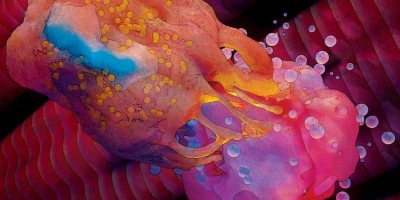Myocardial ischemia–reperfusion injury (MIRI) substantially contributes to the morbidity associated with ischemic heart disease. Timed administration of digoxin decreased the susceptibility of mouse cardiomyocytes to MIRI; digoxin acted by promoting proteasomal degradation of the nuclear receptor REV-ERBα, a key component of the molecular circadian clock.

References
Nowbar, A. N., Gitto, M., Howard, J. P., Francis, D. P. & Al-Lamee, R. Mortality from ischemic heart disease. Analysis of data from the world health organization and coronary artery disease risk factors from NCD Risk Factor Collaboration. Circ. Cardiovasc. Qual. Outcomes 12, e005375 (2019). An analysis of ischemic heart disease mortality data.
Yellon, D. M. & Hausenloy, D. J. Myocardial reperfusion injury. N. Engl. J. Med. 357, 1121–1135 (2007). A review of MIRI.
Montaigne, D. et al. Daytime variation of perioperative myocardial injury in cardiac surgery and its prevention by Rev-Erbα antagonism: a single-centre propensity-matched cohort study and a randomised study. Lancet 391, 59–69 (2018). This previous article from our team discusses REV-ERBα and MIRI in cardiac surgery.
Duan, Q., Gulati, G. K. & Pierre, S. V. Ouabain and digoxin preconditioning protect cardiac Na/K-ATPase against ischemia-reperfusion injury in Langendorff-perfused mouse hearts. J. Cardiovasc. Pharmacol. 27, 723–726 (2013). This article shows digoxin preconditioning in mouse hearts.
Albert, C. L., Kamdar, F. & Hanna, M. Contemporary controversies in digoxin use in systolic heart failure. Curr. Heart Fail. Rep. 13, 197–206 (2016). This paper summarizes the pros and cons of digoxin use in heart failure.
Berthier, A. et al. Combinatorial regulation of hepatic cytoplasmic signaling and nuclear transcriptional events by the OGT/REV-ERBα complex. Proc. Natl Acad. Sci. USA 115, E11033–E11042 (2018). This article from our team shows the protein–protein interactions of REV-ERBα.
Additional information
Publisher’s note Springer Nature remains neutral with regard to jurisdictional claims in published maps and institutional affiliations.
This is a summary of: Vinod, M. et al. Timed use of digoxin prevents heart ischemia–reperfusion injury through a REV-ERBα–UPS signaling pathway. Nat. Cardiovasc. Res. https://doi.org/10.1038/s44161-022-00148-z (2022).
Rights and permissions
About this article
Cite this article
Digoxin chronotherapy can modulate myocardial ischemia–reperfusion injury. Nat Cardiovasc Res 1, 988–989 (2022). https://doi.org/10.1038/s44161-022-00173-y
Published:
Issue Date:
DOI: https://doi.org/10.1038/s44161-022-00173-y
- Springer Nature Limited


